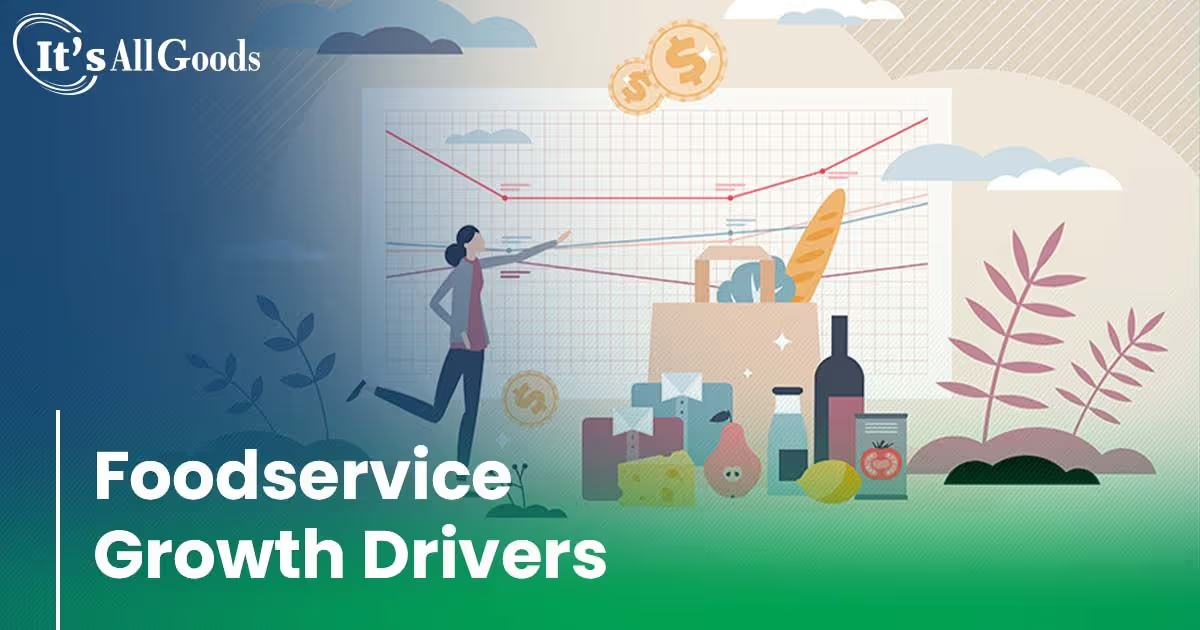

xperts predict the foodservice industry will grow at a compound annual growth rate of 4.1% to become a $660+ billion industry within the next four years. According to a report produced by the National Association of Convenience Stores, food was the second-highest contributor to in-store sales. Foodservice providers must consider key drivers for that to become a reality.
Consumers are becoming more and more health conscious. Of particular interest to shoppers are foods giving the immune system a boost. Food services providers must show why their food is an excellent option in an overall healthy diet. Secondly, the provider must periodically introduce new foods that are better for the health-conscious consumer than older favorites.
According to a National Association of Convenience Stores report, food was the second-highest contributor to in-store sales.
With consumers wanting to live a healthier lifestyle. This trend gained momentum during the pandemic, including a desire for both physical and mental health products. With more consumers becoming conscious of the effects foods have on their bodies, foodservice providers are compelled to offer healthy alternatives – hopefully options that are not available to their competitors if they want to capture a larger market share. Additionally, they may need to work with experts in the field to create meaningful engagement experiences. This means providers will have to work with innovative companies producing great-tasting food that is also healthy for the consumer.
The average American meal is trucked over 1,500 miles, and many consumers are finding that unacceptable. First, many consumers are considering the impact that semis, trains and planes have on the environment. Secondly, consumers looking for healthier food options know that produce is often not picked at the height of freshness when the food is most nutrient-dense. Then, once a product is produced, it usually contains chemicals to help it stay fresh until it reaches the consumer.
Therefore, foodservice providers must actively encourage local companies to grow and produce healthy food options that they can offer to consumers in their locations. Studies have shown that consumers are willing to pay more when they know where their food originated. They are willing to pay even more when that food is produced within 400 miles of their home.
One solution is the creation of food hubs within local areas. These hubs offer various foods produced locally. In a survey, over 44% of consumers say they are more likely to support organizations that help protect local farmland. While 48% say they are more apt to shop at a business where they know their purchases are helping to support the local economy.
Consumers are increasingly worried about food safety. The United States government has put new stringent rules in place, but many foodservice providers have implemented even more stringent regulations. If you want consumers to return to your location, you must provide clean and safe foodservice.
Convenience stores have unique food safety issues because of their broad target audience and the variety that consumers expect at their chosen location. These issues will only be solved when foodservice providers work carefully with first-stage providers to arrive at solutions that are workable for everyone.
One step that convenience stores must take is to ensure that their employees are appropriately trained in food safety. Convenience stores must start or continue publishing their food safety guidelines.
Consumers are demanding more transparency than at any other time in history. Particularly as they move away from fad diets towards making healthy food decisions for themselves and their families, they want to know that the companies where they do business share common values with them.
One of those values is sustainability. Consumers want natural foods preferably created on nearby farms and not food manufacturing centers. As such, sellers need to endorse marketing efforts letting consumers know about the c-store’s attempts to bring healthy food options to them.
Consumers realize that transparency is not always the cheapest option, but it is a difference that they are willing to pay for as they see it as part of their efforts to be socially responsible.
Consumer trends in the aforementioned areas are likely to continue. The convenience store chain that does the best job of controlling these aspects of products and operations is well positioned to flourish in a changing consumer landscape.